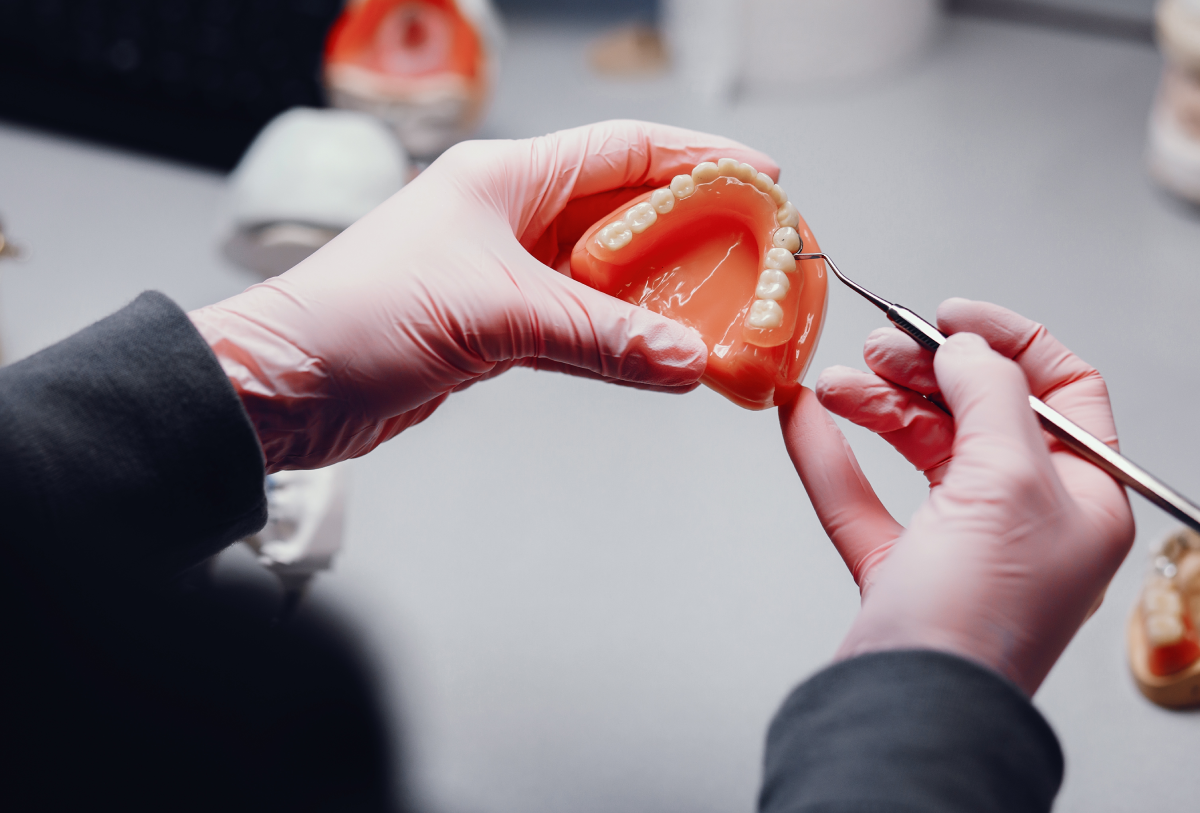
Implant prostheses are specially designed prostheses that are supported by dental implants and placed permanently in the mouth.

Implant prostheses are specially designed prostheses that are supported by dental implants and placed permanently in the mouth. These prostheses are used to provide aesthetic and functional improvements when teeth are missing. Implant dentures allow patients to achieve the closest feeling to natural teeth and safely regain their chewing function.
Types of Implant Prosthesis:
- Implant Supported Fixed Prostheses: Implant-supported fixed prostheses are prostheses that are mounted directly on the implants and cannot be removed. These dentures are usually made of porcelain or ceramic material and provide an aesthetic similar to natural teeth. Implant-supported fixed prostheses are durable and long-lasting because they form a solid foundation.
- Implant Supported Removable Prostheses: These are prostheses that are mounted on implants and can be removed by the patient. Implant-supported removable dentures fit securely because they are attached to the implants. The patient can remove and clean the prosthesis as needed.
Advantages of Implant Overdentures:
- Natural Appearance and Comfort: Implant prostheses provide an aesthetic appearance similar to natural teeth because they are made of porcelain or ceramic materials. In addition, the implants provide a comfortable use as the prostheses are held firmly in the mouth.
- Improving Chewing Function: Implant prostheses effectively restore chewing function because they rest on a strong foundation thanks to the implants. This allows patients to chew a variety of foods comfortably.
- Jawbone Protection: Since the implants are integrated with the jawbone, they stimulate the jawbone, preventing its loss and preserving the health of the jawbone.
- Permanent and Reliable Solution: Implant overdentures offer a long-term solution as they are mounted on correctly placed implants. These prostheses are known for their durability and reliability.
- Support for Facial Lines: Tooth loss can cause changes in facial features. Implant prostheses support facial contours and provide an aesthetic balance by restoring teeth.
Implant Prosthesis Application Process:
- Examination and Planning: In the first stage, the dentist evaluates the patient's oral structure and makes a plan for implant overdenture treatment. The patient's health status, jawbone structure and aesthetic preferences are taken into consideration.
- Implant Placement: The first step in implant prosthesis is to place the implants in the jawbone. The implants are made of titanium or titanium alloys and integrate with the jawbone to form a strong foundation.
- Impression and Design: After the correct placement of the implants, impressions are taken and a special prosthesis is designed. This design is prepared in accordance with the patient's oral structure and aesthetic preferences.
- Prosthesis Production: The specially designed prosthesis is produced in a laboratory environment. The prosthesis is made with materials that mimic natural teeth, providing an aesthetic appearance.
- Application of the prosthesis: The manufactured prosthesis is securely mounted on the implants. The fit, aesthetic appearance and chewing function of the prosthesis are checked.
- Control and Monitoring: Regular check-ups are performed after the prosthesis is applied. During these checks, the fit of the prosthesis and the health of the implants are evaluated. If necessary, the patient can contact the dentist to report any problems.
Implant prostheses minimize the aesthetic and functional effects of tooth loss, providing patients with a natural smile and comfortable use. However, implant prosthesis requires the patient to maintain good oral hygiene and regular check-ups. With proper care and follow-up, implant-retained dentures can help to achieve successful long-term results.




